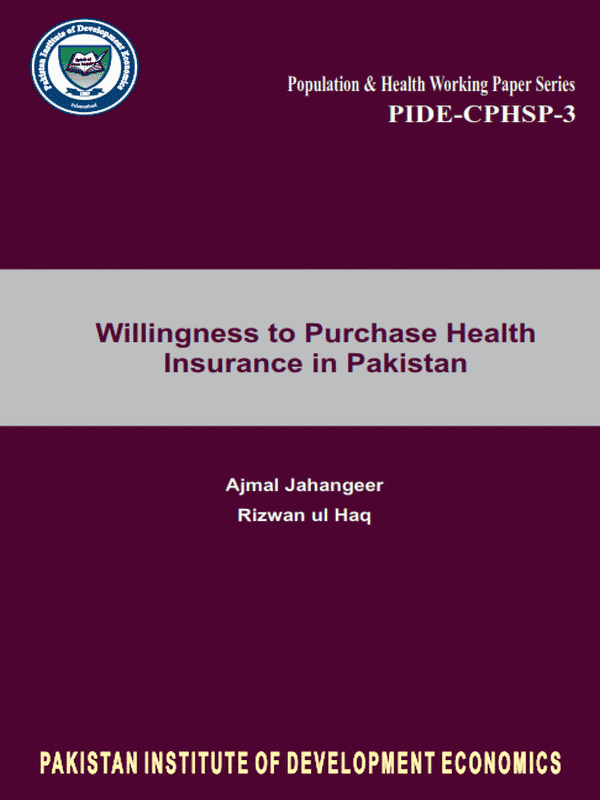Willingness to Purchase Health Insurance in Pakistan
Paying for health-services expenditures that are higher than a household’s income has an adverse effect on its financial position. The term used for such an event in literature is ‘Financial Catastrophe’. What happens in such a situation is that the affected household meets this extra burden by cutting down on other basic necessities like clothing, food and education. Around 20 percent people of the world have to make catastrophic expenditures on health as a result of which around 100 million people are rendered poor annually [Ke X, et al. (2005)]. Catastrophic payments are caused by expensive health care services, inadequate financial position of the households to cushion the impact of such health expenditures, and non-availability or limited existence of risk pooling mechanisms, whether public or private. Such mechanisms protect households against financial risk of ill health by providing the required health services at a lower cost [Ke X. et al. (2005)].




